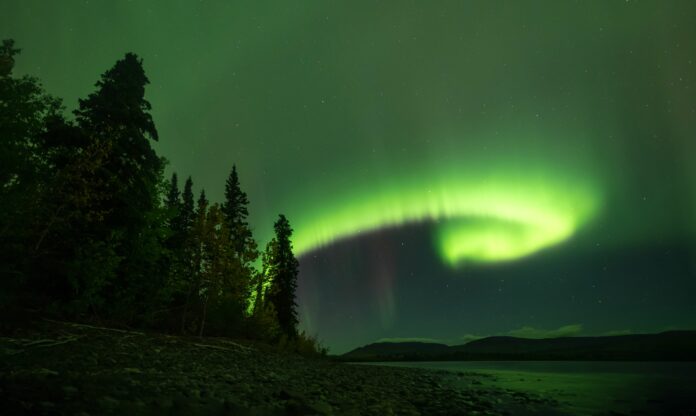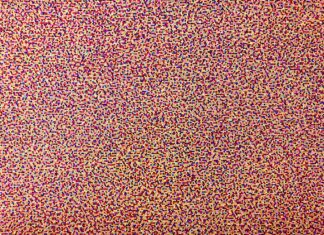Daisies, those unassuming yet enchanting blooms that grace meadows, gardens, and landscapes around the world, are more than mere flowers; they are a symbol of simplicity, purity, and the enduring beauty found in nature’s most humble creations. In this extensive exploration of daisies, we will journey through their diverse species, cultural significance, ecological roles, and the poetic resonance they evoke in the human imagination. Beyond their petals and stems lies a world rich in symbolism, ecological importance, and artistic inspiration.
The term “daisies” typically refers to a group of flowering plants belonging to the family Asteraceae, known for their characteristic composite flower heads. The genus Leucanthemum, commonly referred to as oxeye daisies, and the genus Bellis, including the common lawn daisy (Bellis perennis), are among the most well-known representatives of this floral group. While these two genera are prominent, the daisy family encompasses a vast array of species, each with its unique characteristics and adaptations.
Daisies are celebrated for their uncomplicated yet captivating beauty. Their petals, often in shades of white, pink, or yellow, radiate from a central disk, creating a visually appealing contrast. This simple yet harmonious arrangement of petals and disk florets endows daisies with an elegance that has captivated botanists, artists, and nature enthusiasts for centuries.
Beyond their aesthetic charm, daisies serve as ecological linchpins in various ecosystems. Their nectar-rich flowers attract a diverse array of pollinators, including bees, butterflies, and flies. These pollinators play a crucial role in the reproductive success of not only daisies but also other plant species in their vicinity. As pollinators visit daisy flowers in search of nectar and pollen, they inadvertently transfer pollen from one flower to another, facilitating fertilization and seed production.
Daisies’ ecological importance extends beyond their role as nectar sources for pollinators. They are often pioneers in disturbed or barren landscapes, thanks to their resilience and adaptability. Their ability to thrive in adverse conditions makes them valuable in soil stabilization and erosion control efforts. As daisies establish themselves, their root systems help bind soil, preventing erosion and promoting the establishment of other plant species.
In addition to their ecological roles, daisies have left an indelible mark on human culture and symbolism. The image of a daisy, with its pristine white petals surrounding a golden center, has been associated with notions of innocence, purity, and simplicity in various cultures throughout history. This symbolism is perhaps most famously captured in the phrase “pushing up daisies,” which euphemistically refers to someone who has passed away, evoking the idea of a peaceful return to nature.
In literature and the arts, daisies have been a recurring motif, celebrated for their aesthetic appeal and symbolic resonance. Poets and writers have often turned to daisies to convey themes of beauty, transience, and the connection between humanity and the natural world. William Wordsworth’s poem “To the Daisy” and John Keats’s “Ode to a Daisy” are prime examples of how these unpretentious flowers have inspired profound reflections on life and mortality.
Furthermore, daisies have found their way into folklore and traditions, often associated with divination and fortune-telling. The act of plucking daisy petals one by one while reciting “He loves me, he loves me not” is a charming yet whimsical way to seek answers to matters of the heart. This playful tradition, often practiced by young lovers, reflects the enduring allure of daisies in matters of romance and human relationships.
Beyond their symbolic significance, daisies have practical uses in traditional herbal medicine. Various species of daisies have been used to treat a range of ailments, including digestive issues, skin conditions, and respiratory complaints. While modern medicine has largely supplanted these traditional remedies, the historical use of daisies in healing practices underscores their cultural significance and utility.
Daisies are also cultivated for ornamental purposes, gracing gardens and floral arrangements with their timeless beauty. Gardeners appreciate their hardiness and adaptability, making them a popular choice for borders, rock gardens, and wildflower meadows. Whether in carefully manicured flowerbeds or thriving in the wild, daisies continue to enchant with their delicate allure.
In conclusion, daisies are far more than petals and stems; they are a testament to the intricate interplay between nature, culture, and the human imagination. Their ecological roles as pollinator attractors and soil stabilizers underscore their importance in ecosystems, while their symbolism in art and literature reveals their enduring appeal as a source of inspiration. Daisies, with their timeless simplicity and profound resonance, serve as a reminder of the beauty found in the most unassuming corners of the natural world.
Beyond the customary discussions of daisies’ ecological roles and cultural significance lies a vast realm of contemplation—an exploration that transcends the structured boundaries of key features and delves into the depths of human connection with nature, the poetics of simplicity, and the universal appeal of the unassuming.
Daisies, those ubiquitous yet exquisite wildflowers, offer an invitation to pause and reconnect with the natural world. In a fast-paced, modern existence, where technology and urbanization often obscure our connection to the earth, daisies serve as gentle reminders of our roots in the soil, our dependence on the seasons, and our interconnectedness with the web of life. They beckon us to step out of the confines of concrete jungles and embrace the simplicity and beauty that nature generously bestows upon us.
In the presence of daisies, we are transported to meadows and fields, where time seems to slow down. Their petals, kissed by the sun and caressed by the breeze, carry the whispers of a thousand stories. These simple yet elegant flowers evoke a sense of nostalgia, reminiscent of carefree childhood days spent exploring the countryside. They conjure memories of warm afternoons, where laughter and the scent of wildflowers filled the air.
There is a universal allure to daisies that transcends borders and cultures. From the remote villages of rural Africa to the bustling metropolises of Europe, daisies have found their place in the hearts of people worldwide. They are a testament to the power of nature to inspire, soothe, and unite, regardless of linguistic or cultural differences.
The act of picking daisies, as one would gather scattered thoughts, is a practice in mindfulness—a deliberate pause in the rush of life to appreciate the present moment. Each plucked daisy is a reminder to savor the fleeting beauty of the now, to breathe in the fragrance of the earth, and to embrace the simplicity that often eludes us in our quest for complexity.
Moreover, daisies invite us to consider the profound wisdom in simplicity. In a world that celebrates complexity and novelty, these unadorned blooms teach us that beauty need not be extravagant to be impactful. Daisies find elegance in their modesty, drawing our attention to the quiet power of understatement. They remind us that amidst the cacophony of modern life, the most profound truths are often expressed in the simplest terms.
In literature, daisies have been celebrated by poets and authors for their ability to convey complex emotions through their unpretentious petals. From William Wordsworth’s romantic musings to the vivid imaginations of children’s book authors, daisies have captured the hearts and pens of countless writers. Their enduring presence in literary works speaks to their ability to evoke universal themes of love, innocence, and the passage of time.
Daisies are also a testament to nature’s artistry. Their intricate design, with delicate white petals arranged around a sunny yellow center, reflects the elegance of patterns found throughout the natural world. They are a living canvas upon which pollinators paint their brushstrokes, a testament to the intricate relationships that sustain ecosystems. In the intricate dance between daisies and their pollinators, we witness the beauty of coexistence and interdependence.
Beyond their visible beauty, daisies harbor secrets in their genetic code. They possess adaptations and resilience honed over millennia of evolution. Their ability to thrive in diverse habitats, from alpine meadows to coastal cliffs, is a testament to their adaptability and tenacity. In studying daisies, scientists uncover the intricate mechanisms that allow life to persist in the harshest of environments.
Furthermore, daisies embody the timeless appeal of the wild and untamed. In our increasingly urbanized world, they remind us of the untamed wilderness that still exists on the fringes of our cities. They are a living connection to the untamed spirit within each of us, an invitation to embrace the wild and unpredictable aspects of our own natures.
In conclusion, daisies are more than just flowers; they are living symbols of simplicity, beauty, and our intrinsic connection to the natural world. In their presence, we find an opportunity to reconnect with the earth, to appreciate the elegance of simplicity, and to embrace the universal language of nature. Daisies are a reminder that amidst the complexities of life, the most profound truths are often found in the unadorned, the unpretentious, and the ever-present beauty of the world around us.
Within the delicate petals of daisies lies a silent poetry—a language of form, color, and simplicity that transcends words and stirs the deepest recesses of our souls. This exploration takes us beyond the structured confines of key features, away from the well-trodden paths of science and symbolism, and into the realm of contemplation—an odyssey of wonder and reflection.
Daisies, in their pristine purity and understated elegance, invite us to witness the poetry of the everyday. In a world often enamored with the extraordinary and the extravagant, these unassuming flowers remind us that beauty can be found in the most commonplace corners of our existence. They are a gentle reprimand to our tendency to overlook the ordinary wonders that surround us, to seek the spectacular while neglecting the subtle.
In the realm of art, daisies have long been muse and metaphor. The canvas of countless painters, they have been rendered in oils, watercolors, and pastels, capturing their essence in strokes of color and light. Through the eyes of artists, daisies have been transformed into symbols of purity, innocence, and the transient nature of existence. Each brushstroke, each play of light and shadow, is an homage to the intricate beauty of these blossoms.
Likewise, photographers have trained their lenses on daisies, seeking to capture the play of dewdrops on petals, the interplay of light and dark, and the exquisite details that often elude the casual observer. In the world of macrophotography, daisies become vast landscapes, each petal a mountain range, each yellow disc a sunlit valley. Through the lens, we are offered a fresh perspective on the world beneath our feet.
Beyond the realm of human artistry, daisies are themselves masterpieces of design. Each petal, arranged with mathematical precision, follows a sequence known as the Fibonacci spiral—a mathematical marvel found throughout the natural world. It is a reminder that the beauty we perceive in daisies is not merely a matter of chance but a manifestation of the elegance of mathematical order.
In the gentle sway of daisies in the breeze, we find a lesson in the art of surrender. Their slender stems, resilient yet yielding, bend to the forces of nature, embracing the ebb and flow of wind and rain. In their surrender, they teach us the value of flexibility and resilience, of yielding to life’s currents without breaking.
Moreover, daisies are ambassadors of the seasons. They mark the passage of time with their blooms, opening their petals in response to the changing rhythms of light and temperature. In their fleeting existence, they reflect the impermanence of all things, reminding us that each moment, each season, is a gift to be cherished.
The language of daisies is one of subtlety and nuance. It is a language whispered in the rustle of leaves and the chirping of birds—a language often drowned out by the cacophony of modern life. To decipher this language, one must become attuned to the quiet rhythms of nature, to the symphony of life that plays out in the spaces between words.
Daisies also invite us to contemplate the interconnectedness of all living beings. In their role as pollinator magnets, they facilitate the exchange of life-giving pollen, linking plant to insect, insect to bird, and bird to plant in a web of relationships. This intricate dance of life serves as a reminder of the delicate balance that sustains ecosystems and the profound interconnectedness of all living things.
In the hush of a meadow adorned with daisies, we find a sanctuary of stillness—a respite from the ceaseless chatter of our minds. In their presence, we are invited to simply be, to release the burdens of thought and immerse ourselves in the pure experience of the moment. In this stillness, we rediscover a sense of wonder that often eludes us in the noise of our daily lives.
In conclusion, daisies are not merely flowers; they are whispers of the sublime, echoes of a language spoken in the realm of form and beauty. They invite us to explore the poetry of simplicity, the artistry of the ordinary, and the wonder of the everyday. In their presence, we discover that the world is a canvas of quiet marvels, awaiting our patient gaze and our willingness to listen to the language of daisies—a language that transcends words and connects us to the timeless rhythms of the natural world.


















